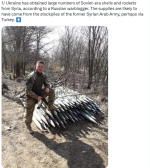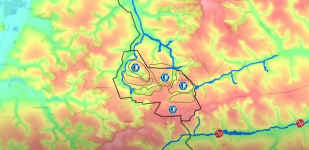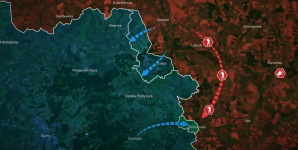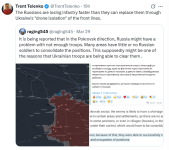ChloeTzang
Literotica Guru
- Joined
- Apr 14, 2015
- Posts
- 18,464
Follow along with the video below to see how to install our site as a web app on your home screen.
Note: This feature may not be available in some browsers.

I've been following his vids since back in 2022. Even his ones as a pilot.Quite a good update on what's ging on around Pokrovsk
So now Putin won't sign any deal as long as Zelensky is the President of Ukraine.
Moving the goals posts.....it's almost as if they never had any intention of a ceasefire.
https://www.france24.com/en/europe/...istration-war-peace-ceasefire-zelensky-russia


Is that a sexual innuendo about getting a hooker to blow Trump?Ukrainians expect Russia to launch a fresh offensive to strengthen its negotiating position

They're getting close to a million dead.
About 30,000 casualties a month. I don't think the numbers are KIA, but WIA and KIA combined.They're getting close to a million dead.